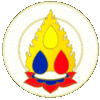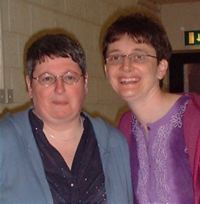Disability Equality and the Bodhisattva Ideal
To the disabled people’s movement, "Disability Awareness" is about simulating an experience of an impairment, for example having a ride in a wheelchair or putting on a blindfold. This is counterproductive as it does not give you the authentic experience of being a disabled person, including the discrimination faced by the person. Simulation can also be very distressing for a non-disabled person and it achieves nothing. We used a Disability Equality" approach, not a "Disability Awareness" approach to the session. This does not place the emphasis on the individual disabled person but on the way that society interacts with disabled people.
So, the first question is, "Who is a disabled person?" A disabled person is someone who experiences physical or sensory impairment, a learning difficulty or mental distress or even a combination of these impairments.
The second question that comes to mind is "what do we mean by the Bodhisattva Ideal?" Our understanding is that the Bodhisattva Ideal is about dedicating yourself, to the enlightenment of others. This was one of the first things that we found attractive about Buddhism – that it is not purely about personal salvation, the ideal has an element of socialism, in that we bring others with us. There is a collective goal as well as an individual goal.
An important element of becoming a Bodhisattva is the Bodhisattva Vow. The essence of this vow is to deliver all beings from "suffering" –a word that we will return to later on. So, in relation to disability equality, what do we mean by freeing disabled people from suffering and enabling disabled people to attain enlightenment?
The Medical Model and Social Model of Disability
The traditional view of disability is called the Medical Model of Disability. This is the view widely held by doctors and other health professionals, social workers, charities, the media, education systems and therefore the public at large. The medical model looks at disability solely in relation to a person’s impairment – in effect what is, in medical model terms, different from the norm in the person’s body or mind. The medical model categorises certain impairments as "defects" and therefore views disabled people as defective in some way. The emphasis is on the disabled person as the problem.
So if the "problem" is located in the person’s body or mind, the solution would be to cure the person or, if this cannot be done, to provide disabled people with segregated services, for example so called "special schools", day centres, residential homes etc, etc. The extreme end of the Medical Model is to remove disabled people from society through eugenic methods such as prenatal screening, do not resuscitate notices and euthanasia.
The Social Model of Disability was defined and developed by politically active disabled people in the late nineteen sixties and early nineteen seventies as an alternative to the Medical Model. The Social Model basically states that disabled people are not disabled by differences in our bodies or our minds but because society disables us. It is society that creates barriers for disabled people such as inaccessible buildings, information, transport and negative attitudes towards disabled people. This means that the disabled people’s movement is about challenging oppression – it is a civil and human rights movement, in the same way that the women’s movement or the Black civil rights movement is.
So if the "problem" of disability is the barriers that society has created, the solution is to remove the barriers i.e. to change society – or to use a slogan that we used on some disabled people’s direct action: "Don’t Change Us, Change the World"
Suffering
This brings us back to the use of the word "suffering". In the West, suffering is associated with individual pain and distress. Accompanying this, someone experiencing pain viewed as a victim and this leads to feelings of great pity towards disabled people. Charities FOR disabled people often rely on concepts of tragedy and the general public’s feelings of guilt and pity. This is all very negative. In a Buddhist context, pity is the near-enemy of compassion. So we should strive, at all times, to distinguish between feelings of compassion, which can be helpful; and pity and sorrow, which are negative and unhelpful.
The Social Model does not negate that the fact that disabled people may experience pain, distress or discomfort. But the Social Model does not say that because people experience these things that, therein lies the problem. The Social Model is clear that the primary problem does lie with society and that society needs to remove the barriers that disable people. So putting compassion into action is about removing disabling barriers.
Metta Practice and Buddha Nature
The Bodhisattva path may not be one that we think we can attain. However, many of us do, on a day to day basis, try to practice metta. Metta is often defined as requiring both kindness and helpfulness. In a Social Model context, by thinking about the barriers that disabled people face, and then doing something to remove these barriers, we can also put metta into practice in a very clear way.
Every human being is a potential Buddha. The fundamental suffering of all people, both disabled people and non-disabled people, is that we live in ignorance and delusion that prevent us from realising our true Buddha Nature. Therefore disabled people do not have "special suffering" – the fundamental suffering of all people is the same. This is why it is important that we create the conditions for all people to encounter the Buddha, the Dharma and the Sangha. This is about creating the conditions for practice. In a Social Model of Disability context, this can only be realised if the barriers to disabled people’s participation are removed.
The 3 "As" of Disabling Barriers
The first "A" is access barriers. This includes access to buildings, to transport, to information and to the environment in general. This is probably the most obvious way that disabled people are discriminated against but it is important to remember that access barriers do not only affect wheelchair users but also people with other mobility impairments, with sensory impairments, with learning difficulties and people who experience mental distress.
The second "A" is attitudinal barriers. There are many prevailing negative attitudes in society towards disabled people. You just need to think about the images of disabled people in literature. Disabled people are viewed as tragic beings, as brave and plucky, as a worthless burden on society, as not economically viable and as "mad, bad and dangerous". As disabled people, we are patronised and have low expectations placed on us. These attitudinal barriers can have a huge impact ranging from internalised oppression and low self-esteem to low attainment in education and employment which in turn leads to poverty and back to a lack of self-worth.
Language is a powerful way of reinforcing the attitudes and views of any society or group. One example, is that commonly used metaphors shore up the negative attitudes towards disabled people that are held by society. Blindness is often used as a metaphor for lack of awareness or insight or lack of questioning, for example blind faith, blind justice, love is blind etc. Deafness is used as a metaphor for lack of consideration for the views of others.
The last "A" is assistance barriers. Some disabled people may need personal assistance, advocacy or sign language interpretation in order to participate fully in society. Often, non-disabled people view this as a "special need". It is not. In fact, non-disabled people use assistance all the time, without viewing this as a special need. For example, a sighted person uses the assistance of a printing firm and a bookshop to access literature. Because a blind person cannot access this assistance, they may need alternative assistance, such as a reader. There are close parallels here with Buddhist concepts of "interconnectedness", none of us can operate independently of other people.
This session was on the cusp of awareness and action. The "awareness" is actually about mindfulness combined with an understanding of the Social Model of Disability. The action is about removing barriers that allow disabled people the conditions to practice. The final point to think about is whether these actions should be individual actions or collective actions. The short answer to that is "both". Some barriers will be institutional, such as policy or planned activities or where the Buddhist centre is situated, and these barriers can only be removed collectively, by consensus. In order to achieve the removal of institutional disablism, we all personally need to develop our attitudes so that we want to create a Sangha that will be equally accessible for everyone. The linked question to this, is whether the actions should be aimed at removing the barriers for individual disabled people, i.e. a reactive approach, or taking the proactive approach to removing barriers for all potential Sangha members. We would emphasise the need to be proactive, not reactive, whilst taking on board the experiences of disabled people as individuals.
Dorothy Mallon and Lucy Wilkinson
Labels: Bodhisattva Ideal, Disability


 rss
rss
0 Comments:
Post a Comment
<< Home